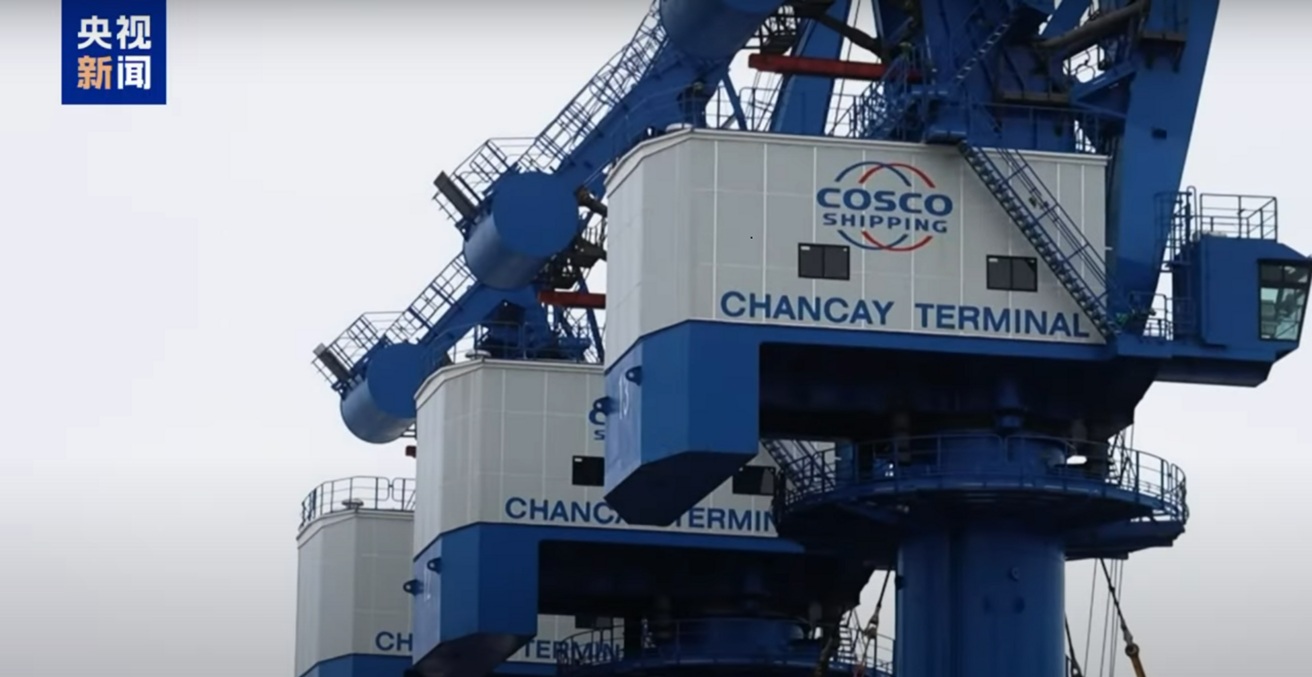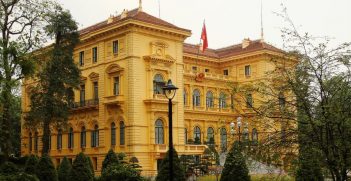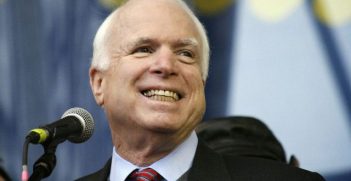Washington and Beijing Clash in Peru as China Grows Diplomatic Inroads

The diplomatic clash between the US and China over fishing resources in Peru illustrates how Peru’s deepening economic ties with China have increased geopolitical tensions, particularly around strategic assets like the Chancay Megaport. As China’s economic dominance in Peru grows, the country faces a challenging balancing act, trying to preserve political neutrality amid escalating rivalry between the US and China.
A little-known anecdote from the history of digital diplomacy occurred in Peru in 2020, when the X (Twitter) accounts of the US and Chinese embassies publicly accused each other of plundering Peru’s maritime fishing resources. On 22 September, the US Embassy in Peru issued a Tweet alerting the government to the presence of a fleet of more than 300 ships from China on the Peruvian coast, reporting that these ships were overfishing in the area, and causing enormous ecological and economic damage. Shortly after, the Chinese Embassy denied these claims, and accused the US embassy of spreading fake news and of being a worse polluter than China.
The tensions between the two countries over the Peruvian situation, although always low-profile, have been increasing due to the growing presence of China in the local economy. This presence deepened further in November 2024 with the inauguration of the new Chancay Mega port, of which the company Cosco Shipping, a Chinese state-owned company, owns the assets. But it is not just Chancay. It is estimated that China has established partnerships with 47 countries (Peru among them) and four international organisations: the European Union, the Association of Southeast Asian Nations (ASEAN), the African Union (AU), and CELAC.
Peru has taken a privileged role compared to other countries in the region, managing to expand strategic partnerships to include the areas of politics, economy, technical cooperation, and culture. Since 2014, China has become Peru’s main trading partner, with the “strategic” feature developing around agriculture, fishing, energy, and ports. This has been achieved in an asymmetrical manner, where Chinese companies (many of them state-owned) control strategic Peruvian assets without greater accompanying control or presence by the Peruvian State. In this sense, Peruvian state-owned companies are few and weak, with low capabilities to establish joint venture companies. The current political crisis in the country (six presidents in the last nine years) has contributed to this weakened state capacity, including the regulation of foreign investment. Peru’s policy of rapprochement with China has been a consequence of two long-term policies: Peru’s entry into APEC in 1997, and its policy of trade liberalisation through bilateral free trade agreements (FTA) since 2002.
This economic relationship was boosted by the China-Peru FTA (2009), which has allowed for sustained growth in trade. According to the Foreign Trade Society of Peru (COMEX Perú) Peru’s total exports to China during the period 2009-2023 recorded a growth of 412 percent, with an average annual growth rate of 13.4 percent. In the case of traditional exports (mining and raw materials), these have seen an increase of 418 percent, with an average annual growth rate of 13.5 percent, while industrial exports experienced a growth of 284 percent, with an average annual rate of 10.9 percent. This dynamism has positioned China as the main destination for Peruvian exports and the primary source of its imports. Indeed, the volume of bilateral trade has reached historic levels. In 2022, Peruvian exports to China totaled AUD$33 billion, representing 33 percent of the country’s total exports. At the same time, imports from China amounted to 25 billion, equivalent to 26.2 percent of total Peruvian imports. These values reflect the dominant role that China has acquired in the Peruvian economy, both as a destination market for its primary products and in the provision of essential manufactured goods for industry and domestic consumption.
According to US officials in 2023, the United States is worried about China’s growing economic relationship with Peru. Currently, the United States is the fourth largest foreign investor in Peru (with 11 percent) compared to the United Kingdom (18 percent), Spain (17 percent), and Chile (11 percent). The country has been critical of the dominant role that Chinese companies (especially state-owned ones) have taken on in sectors such as electricity and mining. In April 2023, the Italian company Enel sold all of its assets in Peru to China Southern Grid International, providing electricity to the north of Lima. The Chilean company Luz del Sur meanwhile was sold to the Three Gorges Corporation. Now, 100 percent of Lima’s electricity, (one of the largest capitals in South America, with almost 13 million people) is controlled by corporations from a single country: the People’s Republic of China. During Xi Jinping’s visit to Lima during the APEC summit in November 2024, Peruvian President Dina Boluarte highlighted the promotion of Chinese investment in Peru as a strategic objective of her government.
The arrival of a new foreign policy in America under President Donald Trump puts Peru in a precarious position; the US imposed a ten percent of tariff despite having a FTA with Peru since 2009. Close advisers to Trump have openly criticised China’s Megaport project in Chancay and have indicated that they could impose tariffs of up to 60 percent on all products entering the US market through Chancay, despite the fact that products going to the United States leave mainly through the port of Callao, while products destined for China and vice versa leave through Chancay. At the same time, the Peruvian Congress approved an agreement for the entry of armed US troops into Peru, with the aim of carrying out joint military exercises in 16 Peruvian locations throughout 2025.
Considering that some key officials in the Trump administration have opined that Chancay can serve as a Chinese military base (the Djibouti of South America) for supplies, logistics and ship repairs, Peru must be clear that its political neutrality in the middle of the conflict between China and the United States may be forced to end at some point. When that moment comes is at this point unclear.
Anthony Medina Rivas Plata is president of the Institute of Andean Political Studies (Peru) and vice-president for Latin America and the Caribbean at the International Association for Political Science Students-IAPSS (Canada). Additionally, he i s Professor of Political Science at the Universidad Nacional Mayor de San Marcos and the Universidad Católica de Santa María.
This article is published under a Creative Commons License and may be republished with attribution.





